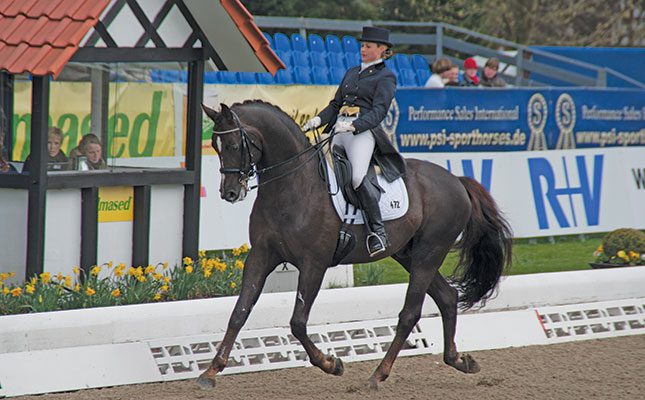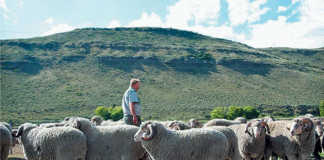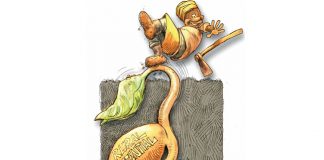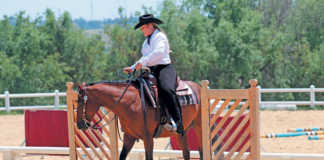
Photo: Wikimedia Commons
Most riders have heard about ‘Monday morning sickness’, ‘tying-up syndrome’ and polysaccharide storage myopathy in horses. Tying-up, also known as exertional rhabdomyolysis, is a condition that causes muscles running over the hindquarters to tighten and cramp up.
Recent studies have highlighted links to training and feeding strategies in racehorses that can also be applied to preventing tying-up in sport horses.
Muscle types
There are three types of muscles in humans and animals. Smooth muscles control contractions in the stomach, intestines and bladder.
Cardiac muscles contract the heart regularly and automatically in order to keep the venous and arterial blood pumping steadily throughout body.
Skeletal muscles connect to bones and joints. They require a good oxygen supply as they’re responsible for both slow and rapid movement.
In human and equine athletes alike, there are two kinds of skeletal muscle fibres: the so-called slow-twitch (type 1), which provide strength and endurance; and the fast-twitch (type 2A and 2B), which are used for high speed for short durations.
Type 1 development is needed in draught, cross-country and endurance horses, while type 2 development is more useful for showjumpers and racehorses.
There is also a difference between type 2A and 2B muscle fibres. The former influence rapid and powerful muscle contractions over a short period. They are predominantly found in Thoroughbred horses that win ‘sprint’ races, as well as Quarter Horses that run fast over a short distance. Type 2B muscle fibres are found in ‘stayers’ (horses that run longer-distance races).
The proportion of each kind of muscle fibre is inherited. Thus it is better to purchase a registered sporting or racehorse to minimise muscle damage and tying-up.
Muscle damage leading to tying-up can result from using the wrong breed for a particular discipline. It can also be a consequence of insufficient warming up before exercise; incorrect or overtraining; riding unfit horses; or extreme weather conditions.
Diet is another factor: a high-starch diet with insufficient fibre can increase lactic acid, or cause an antioxidant deficiency. Excessive sweating, resulting in dehydration, can also precipitate muscle-fibre damage.
Myoglobin is a protein found in muscle fibres that, like haemoglobin, can store and release oxygen. During extended, strenuous or rapid exercise which results in damage to muscle cells, myoglobin can be released into the blood. This impairs the oxygen supply to muscles, resulting in inflammation (myositis).
One of the indicators that can be monitored in blood to estimate the level of muscle damage is an enzyme called creatine kinase. In severe cases, the myoglobin in the bloodstream will make both the serum and urine dark red in colour, and will lead to fatal kidney failure.
Warning signs and prevention
Early signs include a shortened or uneven stride, involuntary muscle twitching, and pain upon palpation of the hindleg muscles and the back. In addition, rectal temperature, respiration and heart rate are raised.
Prevention involves not only selection of the correct breed and bloodline for a particular discipline, but also a well-organised and methodical exercise programme for sport horses.
Training and feeding should be systematically adapted to reach an ideal level. Depending on the discipline, this can be achieved by correctly designing the frequency, intensity and duration of the exercise programme. This is important not only for building muscles, but also for maintaining the blood flow needed for oxygenation to prevent myositis, especially in racing, endurance, showjumping and eventing horses.
Dr Mac is an academic, a practising equine veterinarian, and a stud owner.











